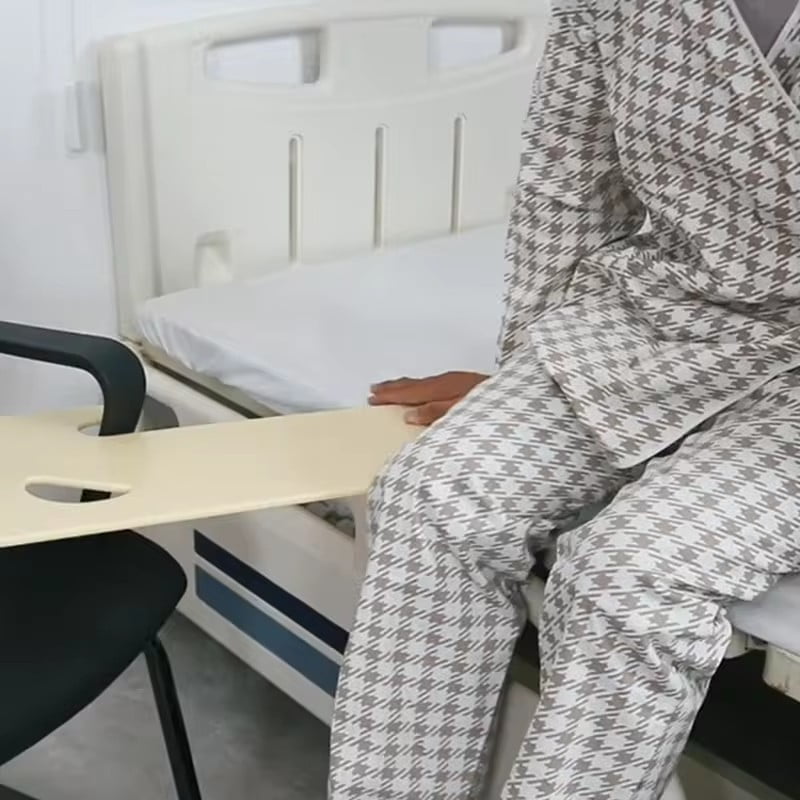Selecting the appropriate equipment for patient transfers is a critical decision in any medical facility, directly impacting patient safety, caregiver efficiency, and overall workflow. Transfer boards, as simple yet effective tools, come in various designs and specifications tailored to different needs. This guide explores the key factors to consider when choosing the right transfer board for your medical facility, ensuring optimal performance and safety in patient handling.
1. The Importance of Transfer Boards in Medical Facilities
Transfer boards are essential devices that facilitate safe and smooth patient movement between surfaces like beds, stretchers, wheelchairs, or examination tables. By reducing the physical strain on caregivers and minimizing risks to patients, they enhance the quality of care and operational efficiency in healthcare settings.
2. Key Factors to Consider When Choosing a Transfer Board
To select the most suitable transfer board, evaluate the following critical factors:
- Weight Capacity: Ensure the board can support the maximum weight of your patient population, including bariatric patients if applicable.
- Size and Dimensions: Choose a board with appropriate length and width to bridge gaps between surfaces and accommodate patients comfortably.
- Material and Durability: Opt for high-quality, durable materials (e.g., plastic, wood, or composites) that withstand frequent use and are easy to clean.
- Surface Design: Look for a smooth, low-friction surface to ease sliding, with optional coatings for added performance.
- Portability: Select a lightweight, compact board that’s easy to transport and store, especially in space-constrained environments.
3. Additional Features for Enhanced Functionality
Beyond basic specifications, certain features can improve usability and safety:
- Handholds or Cutouts: Provide better grip for patients and caregivers, aiding in controlled transfers.
- Beveled or Curved Edges: Reduce discomfort and make it easier to slide patients onto the board.
- Non-Slip Pads: Prevent the board from shifting during use, enhancing stability on uneven surfaces.
- Antimicrobial Coatings: Offer added hygiene benefits, crucial for infection control in medical settings.
- Foldable or Modular Design: Allow for easier storage or adaptability to different transfer scenarios.
4. Matching Transfer Boards to Your Facility’s Needs
Different healthcare environments require tailored solutions. Consider your facility’s specific demands:
- Hospitals: Prioritize boards with high weight capacities and quick usability for busy wards or emergency departments.
- Rehabilitation Centers: Choose boards that support patient independence, with features like handholds for therapy patients.
- Nursing Homes: Opt for durable, easy-to-clean boards suited for frequent use with elderly residents.
- Home Care Settings: Select portable, lightweight options that family caregivers can manage effectively.
- Bariatric Units: Invest in extra-wide, heavy-duty boards designed for larger patients.
5. Balancing Cost and Quality
Budget considerations are key, but quality should not be compromised:
- Initial Cost: Transfer boards are generally affordable, with prices varying based on size, material, and features.
- Long-Term Value: Durable boards reduce replacement frequency, offering better return on investment.
- Safety Savings: Investing in reliable boards lowers the risk of patient injuries and caregiver claims, offsetting costs over time.
- Bulk Purchasing: For larger facilities, buying in bulk may reduce per-unit costs without sacrificing quality.
6. Implementation Tips for Optimal Use
Choosing the right board is only the first step—effective use requires proper integration:
- Staff Training: Train caregivers on correct board placement, patient positioning, and safety protocols.
- Patient Assessment:
- Maintenance Routine: Regularly inspect and clean boards to ensure longevity and hygiene.
- Feedback Loop: Gather input from staff and patients to refine selection and usage practices over time.
7. Conclusion: Making an Informed Choice for Your Facility
Choosing the right transfer board for your medical facility is a strategic decision that enhances patient safety, supports caregivers, and streamlines operations. By carefully assessing weight capacity, size, materials, features, and facility-specific needs—while balancing cost and quality—you can select a transfer board that meets both immediate and long-term goals. With the right choice, your facility can elevate its standard of care and ensure safer, more efficient patient transfers.

